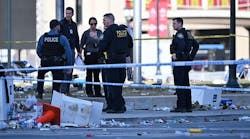I am very pleased to see two cities are taking positive steps to improve public transportation security – showing concern for their passengers and employees by leveraging proven technologies for crime prevention and police forensics.
The Chicago Transit Authority has been very proactive. Each of its stations now has at least one high-definition camera funded through the Department of Homeland Security grant program. The CTA now has more than 1,800 cameras in place, up nearly 53 percent since March 2009. By the end of the year, the organization hopes to have 3,000 cameras operating.
"Having cameras installed at every station is a valuable tool, both for security purposes and from an operations perspective as well," CTA President Richard Rodriguez said in a press release.
Chicago links these transit station cameras with thousands of others from schools, parks, airports and other locations to form what Mayor Richard Daley calls the largest wireless camera platform in the U.S.
In San Diego, federal grants totaling nearly $4 million will largely be spent on upgrading a fiber-optic network that will improve and secure video feeds to the Metropolitan Transit System security operations system. The MTS currently had 253 cameras at its transit centers and the grant will allow them to purchase more.
By the end of the year, MTS officials plan to have cameras at 30 of its 53 stations. The agency also plans to add cameras on 40 buses to go along with the 124 that are already equipped with video surveillance.
"I think it's going to be a great boon to safety because of the fact it will allow us to let the system grow," said MTS Director of Security Bill Burke. Crime on the San Diego transit system is dropping since the cameras were installed.
These are two cities taking advantage of federal government funding sources and taking the safety of their citizens seriously.



